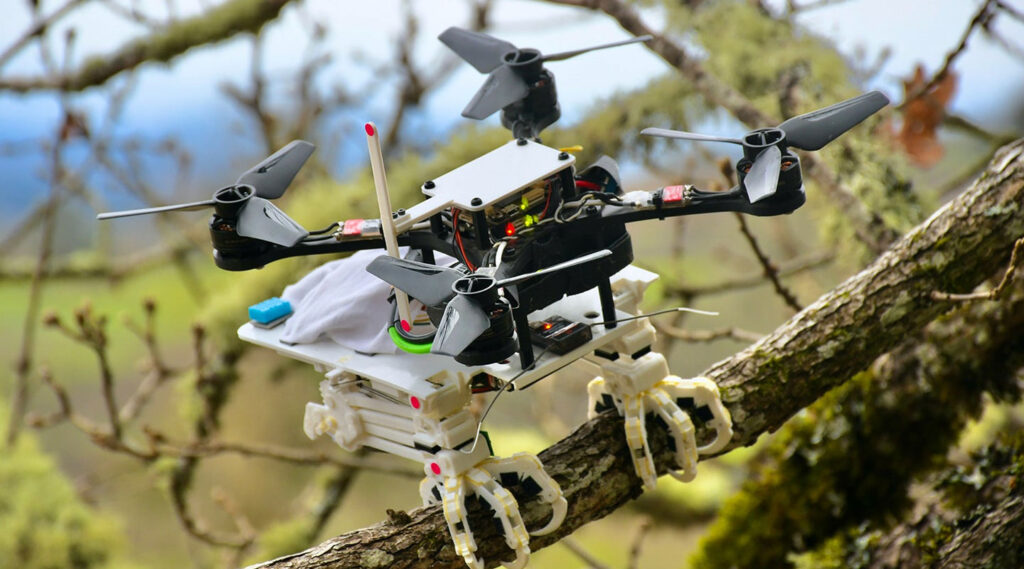Engineers at Stanford University have been chipping away at a robot that is part quadrotor flying robot and part peregrine hawk. The upper portion of the robot resembles a typical quadrotor drone intended to fly through the air. The lower half of the robot has a couple of mauled feet – essentially not the same as anything we’ve found previously.
On the lower half of the robot, engineers made legs propelled by the peregrine bird of prey. The objective of making the robot was to permit the flying machine to roost on an appendage like a bird. The capacity for a robot to fly and land in a tree is a critical enhancement for current robots that regularly require level ground to take off and land. One huge test in the plan is the limitless fluctuation of tree limbs the robot would should have the option to arrive on while working in reality.
Birds have flying and arriving under control, however roosting on an appendage is especially hard to design into a robot fit for flight. The test is that no two branches are similar. Branches vary in size, shape, and surface. A few appendages will be covered with minuscule sticks outgrowing their surface and leaves, while others may be canvassed in greenery. Birds have no issue roosting on any appendage they pick, however planning a flying robot fit for doing likewise was a huge test.
The framework the Stanford engineers made is known as a “generalized nature-roused elevated grasper” abbreviated to SNAG. The bird-like legs permit the flying robot to travel through the sky like a regular robot however enables it to convey articles and roost on different surfaces like a bird. In their examination, the researchers had recently considered parrotlets, which is the second littlest parrot species. In that exploration, the little birds flew to and fro between extraordinary roosts made of fluctuating materials and in changing sizes.

More Stories
The Combination of Web Accessibility with Search Engine Optimization – AccessiBe
How has the Spanish real estate market been affected by the pandemic
Here Are The Best Trading Platform Australia For Your Online Trading Needs